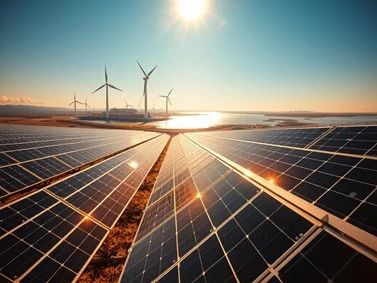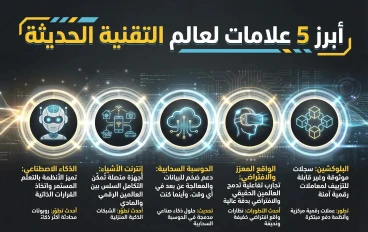
Green Tech for Climate Action: Energy Hydrogen & Beyond
Green Tech for Climate Action: Energy Hydrogen & Beyond
The world is facing a dire crisis as Earth's climate deteriorates. Renewable energy solutions offer a glimmer of hope amidst the chaos. The destruction of forests and the melting of ice caps underscore the severity of our planet's plight.
The urgency for effective climate change mitigation strategies has reached a critical point. In this context, green hydrogen emerges as a pivotal element. It presents a cleaner, more sustainable alternative to conventional energy sources.

Adopting a comprehensive approach that leverages advanced green technologies is essential. This path paves the way for a more sustainable future. As we dive into the realm of these innovations, it becomes evident that our combined efforts can substantially impact the battle against climate change.
The Climate Crisis: Understanding What We're Up Against
The escalating climate crisis demands our immediate attention. It's imperative to grasp the current state of global warming and its profound impacts. The crisis encompasses rising temperatures, an uptick in natural disasters, and unpredictable weather patterns.
Current State of Global Warming and Its Effects
The global warming scenario is dire, with temperatures having surged by approximately 1.2 degrees Celsius since the late 1800s. This escalation has precipitated more severe weather events, such as intense hurricanes, droughts, and heatwaves. These phenomena are disrupting ecosystems, human health, and economies worldwide.
- Rising sea levels imperil coastal communities and islands.
- Extreme weather events are intensifying in frequency and severity.
- Ecosystems are facing disruption, resulting in biodiversity loss.
The Urgent Need for Technological Solutions
To counteract climate change's effects, we must embrace sustainable energy technologies and diminish our carbon footprint. This entails a shift towards renewable energy, enhancing energy efficiency, and constructing climate-resilient infrastructure. Essential strategies include:
- Investing in solar and wind energy to diminish fossil fuel reliance.
- Developing energy storage technologies to address intermittency challenges.
- Implementing smart grid systems for enhanced energy distribution.
By adopting these technological measures, we can substantially lower our carbon footprint. This will aid in climate change mitigation efforts.
Climate Change Mitigation- Renewable Energy Solutions- Green Hydrogen- Carbon
As we confront the challenges of climate change, it's evident that a comprehensive strategy is imperative. Mitigating climate change necessitates a strategy that integrates diverse green technologies. This approach aims to diminish our dependence on fossil fuels and decrease emissions.
The Interconnected Nature of Green Solutions
Renewable energy solutions, such as solar and wind power, are pivotal in combating climate change. These technologies significantly reduce our carbon footprint and offer sustainable energy alternatives. Green hydrogen stands out as a critical element, serving as a clean energy carrier for various sectors, including transportation and industrial processes.
Also, carbon capture and storage technologies are crucial in lowering emissions from industrial activities. They capture CO2 before it enters the atmosphere and store it securely. The interconnectedness of these solutions underscores the necessity for a diverse strategy to combat climate change.
Why a Multi-Technology Approach Is Essential
A multi-technology approach is vital because it enables us to address climate change's multifaceted nature. By combining renewable energy, green hydrogen, and carbon capture and storage, we can develop a comprehensive strategy. This strategy targets emissions from different angles, enhancing energy security and economic stability by reducing fossil fuel dependence.

In conclusion, the battle against climate change demands a multifaceted strategy that incorporates renewable energy, green hydrogen, and carbon capture technologies. Recognizing the interconnectedness of these green solutions is essential. It enables us to implement a multi-technology approach, critical for effective climate change mitigation.
Renewable Energy Solutions: The Foundation of Climate Action
Renewable energy solutions are key to reducing our use of fossil fuels and lowering emissions. Moving towards a sustainable future, it's crucial to understand the different types of renewable energy and their potential.
Solar Power: Harnessing the Sun
Solar power is one of the most accessible renewable energy sources. By using solar panels, people and businesses can make their own electricity. This reduces their need for the grid.
Residential Solar Installation Guide
To start using solar panels at home, first check your energy needs and roof suitability. Consider sunlight and roof direction. Choose a reputable installer and look into available incentives.
Community Solar Projects
Community solar projects let many people benefit from one solar array. They're great for those who can't install panels themselves. They're a good way for renters or those with shaded roofs to support renewable energy.
Wind Energy: Power from Air
Wind energy is another important renewable power source. Wind turbines turn wind into electricity. Wind farms, both onshore and offshore, are growing worldwide to harness this energy.
Hydroelectric and Geothermal: Nature's Power Plants
Hydroelectric power uses the energy of moving water. Geothermal energy uses heat from the Earth's core. Both offer substantial potential for zero-emission electricity.
As we grow these renewable energy solutions, we move closer to a clean energy future. The International Renewable Energy Agency (IRENA) says renewable energy could meet up to 80% of the world's energy needs by 2050.
"The future of energy is not just about technology; it's about people and the planet."
Green Hydrogen: The Next Frontier in Clean Energy
Green hydrogen is becoming a versatile, clean energy carrier. It's changing our energy landscape. As we explore these solutions, green hydrogen's role becomes more important.
? What Makes Hydrogen “Green”
Hydrogen is called "green" when made from renewable energy like solar or wind. This method, electrolysis, splits water into hydrogen and oxygen without greenhouse gases. This makes it an eco-friendly innovation. The key difference is how it's made, unlike hydrogen from fossil fuels.

Production Methods and Efficiency
The efficiency of green hydrogen production depends on the electrolysis technology and renewable energy sources. Better technology and lower renewable energy costs make green hydrogen more practical. These factors improve its economic value.
Practical Applications for Everyday Life
Green hydrogen can change our daily lives.
It can power vehicles and be a clean energy source for homes.
This makes it a key player in our shift to sustainable energy technologies.
Hydrogen in Transportation
Green hydrogen's most promising use is in transportation.
Hydrogen fuel cell vehicles offer a clean alternative to fossil fuels, only emitting water vapor.
This technology could greatly reduce greenhouse gas emissions from cars and trucks.
Hydrogen for Home Energy
Green hydrogen is also good for home energy needs, like heating and electricity.
By mixing it into the natural gas grid or using it in fuel cells, homes can use less fossil fuels.
This reduces their carbon footprint.
Energy Storage Technologies: Solving Intermittency Issues
Renewable energy needs to overcome the challenge of being intermittent.
Energy storage technologies are key to this.
As solar and wind power grow, so does the need for good storage solutions.
These technologies are essential for keeping the grid stable.
They ensure a steady power supply.
This makes renewable energy more viable.
Battery Technologies and Developments
Lithium-ion batteries have changed the game in battery tech.
They are efficient and getting cheaper. They work well for both big grids and homes.
New technologies like solid-state and flow batteries are on the horizon.
They promise even better performance and scalability.
Research in battery tech is crucial.
It aims to make batteries more efficient, safe, and affordable.
As these improvements come, renewable energy will likely grow.
How to Implement Home Energy Storage
Home energy storage is getting easier for those wanting to cut down on grid use and bills.
The first step is to pick the right battery system.
Selecting the Right Battery System
When picking a battery system, think about your energy needs, budget, and space.
Lithium-ion batteries are popular for their efficiency and cost.
Make sure the system works with your solar panels or other renewable sources.
Installation and Maintenance Tips
Getting your system installed right and keeping it up is important.
Have a pro do the install and follow the maker's care tips.
Keep an eye on the system's charge and keep the batteries in the right temperature.
Home energy storage lets homeowners be energy independent, save money, and help the planet.
Carbon Capture and Storage: Tackling Emissions Directly
Carbon capture and storage is a vital tech in our fight against climate change.
It directly tackles emissions, offering a major way to cut our carbon footprint.
Mechanisms of Carbon Capture
Carbon capture and storage captures CO2 from sources like power plants and industrial sites.
Then, it stores this CO2 underground, stopping it from entering the atmosphere.
This is crucial for cutting down greenhouse gases.
Supporting Carbon Capture Initiatives
To help carbon capture efforts, we need to invest in research and development.
This is key to making the tech better and cheaper.
Governments and companies can help by backing policies and projects that support carbon capture and storage.
Creating Personal Carbon Sinks
Everyone can help reduce their carbon footprint by creating personal carbon sinks.
This can be done through:
- Tree planting and land management practices that enhance carbon sequestration.
- Supporting regenerative agriculture, which promotes soil health and carbon storage.
Tree Planting and Land Management
Tree planting is a simple yet effective way to create carbon sinks.
By planting trees and using sustainable land practices, we can boost forests' ability to absorb CO2.
Supporting Regenerative Agriculture
Regenerative agriculture focuses on improving soil health, which can increase carbon storage.
By backing farmers who use regenerative methods
we encourage eco-friendly innovations that help reduce carbon footprint.
Smart Grids and Energy Efficiency: Optimizing Our Systems
Smart grids and energy efficiency are key to a sustainable and resilient energy infrastructure.
As we aim for a greener future, optimizing our energy systems is crucial.
Understanding Smart Grid Technology
Smart grid tech uses advanced tools like smart meters grid management systems,
and renewable energy integration for efficient energy distribution.
It allows for real-time monitoring and management of energy use,
reducing waste and enhancing grid resilience.
Energy Efficiency Measures for Your Home
Boosting energy efficiency in your home cuts down on energy costs and helps the planet.
Simple steps can make a big difference.
Smart Thermostats and Appliances
Adding smart thermostats and appliances can greatly improve energy use.
These devices, controlled from afar, learn your habits to save energy.
Insulation and Building Envelope Improvements
Improving insulation and your home's envelope cuts down on heat loss in winter and heat gain in summer.
This means you need less heating and cooling.
By using smart grid technologies and energy-saving steps
we're moving towards a greener energy future.
This is key for lessening our fossil fuel use and fighting climate change.
Transportation Revolution: Electric and Hydrogen Vehicles
The transport sector is changing with electric and hydrogen cars.
This move to zero-emission solutions is a response to climate change.
It's not just about new travel ways. It's about using eco-friendly innovations to cut our carbon footprint.
Transitioning to Electric Vehicles
Electric vehicles (EVs) are leading this change, offering a cleaner choice than gas cars.
Switching to EVs means understanding charging options and picking the right car for you.
Charging Infrastructure Setup
Getting a home charger is key for EV owners.
Choose a charger that fits your car and consider costs.
The US Department of Energy says a Level 2 charger costs $500 to $2,000.
EV Selection Guide
When picking an EV, think about range, charging time, and cost.
Cars like the Tesla Model 3 and Nissan Leaf offer many choices for different needs and budgets. As
"The future of transportation is electric,"
Elon Musk, Tesla's CEO, says the industry is moving towards electric.
Hydrogen Fuel Cells: When and Where They Make Sense
Hydrogen fuel cells are another promising option for zero-emission transport.
They're good for long trips and places where EVs aren't practical.
Fuel cells turn chemical energy into electricity, making only water and heat.
The push for cleaner energy is driving the transport revolution.
As we move forward, electric and hydrogen cars will be key in cutting emissions and making transport greener.
Practical Steps to Reduce Your Carbon Footprint
Combating climate change starts with individual actions to lessen our ecological impact.
Understanding daily steps is key for a sustainable future.
These actions help reduce our environmental harm.

Conducting a Home Energy Audit
Starting a home energy audit is a big step in cutting your carbon footprint.
It checks your home's energy use, finds heat loss spots, and suggests fixes.
Simple steps like sealing leaks, improving insulation,
and getting energy-efficient appliances can make a big difference.
Key areas to focus on during an audit include:
- Checking for air leaks around windows and doors
- Assessing the condition and adequacy of insulation
- Evaluating the efficiency of your heating and cooling systems
Sustainable Transportation Choices
Choosing green transportation is key.
This means using electric or hybrid cars public transport biking, or walking.
It helps cut down on carbon emissions.
"The future of transportation is electric, and it's happening now." - Elon Musk
Green Consumer Habits
Living green is important. This means picking eco-friendly products and reducing waste.
It's about using less and wasting less.
Eco-Friendly Product Selection
When you shop, look for products with little packaging.
Choose items made from sustainable materials and designed to be recycled or reused.
Eco-labels help you find products that are good for the planet.
Reducing Waste and Consumption
It's vital to reduce waste by composting, recycling, and avoiding single-use plastics.
Being mindful of what we consume helps lessen waste.
By making these changes, we can all help reduce our carbon footprint.
This supports a greener way of living.
Policy and Investment: How to Advocate for Green Tech
Policy and investment are crucial in fighting climate change.
We need to work together to support green technology.
This means talking to policymakers and making smart investment choices.
Engaging with Local and National Policy
It's important to get involved in local and national policy.
We need to watch what's happening in lawmaking and talk to our representatives.
This helps support renewable energy and green investment.
Green Investment Opportunities for Individuals
Individuals can help green technology grow by investing wisely.
Backing renewable energy, green innovations, and green bonds is key.
These investments help fight climate change and can also be profitable.
Overcoming Challenges in Green Technology Implementation
Getting to a greener future is tough. We face many technical economic and social challenges.
But we can overcome them.
Addressing Technical and Economic Barriers
Technical issues like making sustainable energy work better
need more research and money. Economic hurdles, like the cost of green tech
can be solved with help and creative financing. For example
community solar programs let many people share the benefits of one solar array.
Community-Based Solutions and Cooperatives
Community efforts and cooperatives are vital for green tech progress.
By working together communities can tackle energy projects that fit their needs.
Examples include community wind farms and local energy cooperatives.
These efforts boost community spirit and help with costs.
By facing these challenges and using community efforts
we can move faster towards a sustainable energy future.
Conclusion: Our Path Forward with Green Technology
Dealing with climate change requires a wide approach. Renewable energy
like solar and wind, is key. Green hydrogen is also important for fueling industries and transport.
Using these technologies and reducing our carbon footprint is crucial for a sustainable future.
Energy-saving practices and smart grid tech are essential for better energy systems.
We can all help by choosing public transport and living more eco-friendly.
Innovation, investment, and policy support are key for our future.
By using renewable energy, green hydrogen
and reducing our carbon footprint, we can fight climate change.
Together we can create a sustainable world for future generations.





































